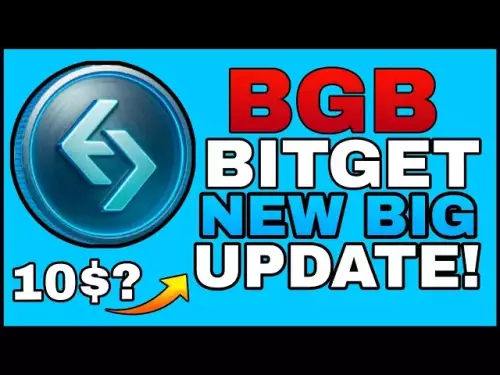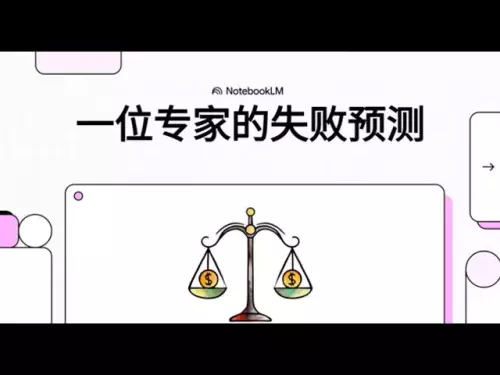-
 Bitcoin
Bitcoin $111800
2.41% -
 Ethereum
Ethereum $4330
0.41% -
 XRP
XRP $2.854
3.36% -
 Tether USDt
Tether USDt $1.000
0.01% -
 BNB
BNB $853.3
0.92% -
 Solana
Solana $209.8
6.27% -
 USDC
USDC $0.9999
0.01% -
 Dogecoin
Dogecoin $0.2148
1.72% -
 TRON
TRON $0.3381
0.27% -
 Cardano
Cardano $0.8379
4.32% -
 Chainlink
Chainlink $23.43
4.29% -
 Hyperliquid
Hyperliquid $44.99
4.26% -
 Ethena USDe
Ethena USDe $1.001
0.03% -
 Sui
Sui $3.333
3.49% -
 Stellar
Stellar $0.3680
2.80% -
 Bitcoin Cash
Bitcoin Cash $584.2
7.13% -
 Avalanche
Avalanche $24.54
5.86% -
 Cronos
Cronos $0.2805
4.87% -
 Hedera
Hedera $0.2216
3.46% -
 UNUS SED LEO
UNUS SED LEO $9.566
0.16% -
 Litecoin
Litecoin $111.8
2.65% -
 Toncoin
Toncoin $3.169
1.76% -
 Shiba Inu
Shiba Inu $0.00001243
2.65% -
 Polkadot
Polkadot $3.821
3.36% -
 Uniswap
Uniswap $9.567
2.42% -
 Bitget Token
Bitget Token $5.189
11.28% -
 World Liberty Financial
World Liberty Financial $0.2269
-4.97% -
 Dai
Dai $0.9999
0.00% -
 Monero
Monero $269.9
3.90% -
 Aave
Aave $315.4
3.41%
What is slippage in a DEX trade?
Slippage on DEXs occurs when trade execution prices differ from expected due to liquidity, volatility, or network delays—manage it with proper tolerance settings and pool analysis.
Sep 02, 2025 at 06:18 pm
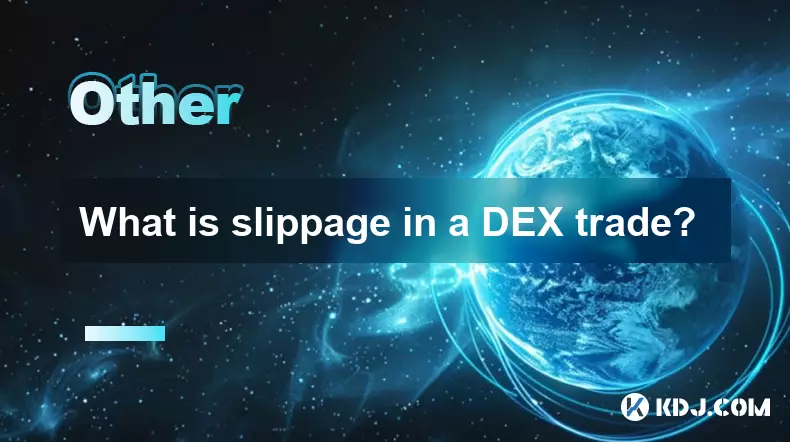
Understanding Slippage in Decentralized Exchanges
1. Slippage refers to the difference between the expected price of a trade and the actual price at which the trade executes. In decentralized exchanges (DEXs), where trades are executed directly from liquidity pools rather than order books, price impact becomes a critical factor. When a user initiates a swap, the size of the transaction relative to the pool’s reserves can shift the asset’s price momentarily. This deviation is known as slippage.
2. Most DEX platforms allow users to set a slippage tolerance, typically ranging from 0.1% to 1% or higher depending on volatility. This setting acts as a safeguard, ensuring that a trade will only go through if the executed price remains within the defined range. If the price moves beyond this threshold due to rapid market changes or large trade sizes, the transaction will revert to protect the user from excessive losses.
3. High slippage often occurs in pools with low liquidity. When a token pair has limited funds, even moderately sized trades can cause significant price shifts. For example, swapping a large amount of a low-cap token for ETH in a shallow pool may result in the output being far less than anticipated, triggering a high slippage event.
4. Volatile market conditions amplify slippage risks. During periods of intense price movement—such as major news events or coordinated market actions—the value of assets in a pool can fluctuate rapidly between the time a transaction is broadcast and when it is confirmed on-chain. This delay increases the chance of execution outside the expected price range.
5. Some advanced trading interfaces offer dynamic slippage suggestions based on real-time pool depth and recent volatility. These tools help users make informed decisions by displaying estimated price impact before confirming a swap. Understanding these indicators can reduce the likelihood of failed transactions or unfavorable fills.
Factors Influencing Slippage Rates
1. Liquidity depth is the primary determinant of slippage. Pools with higher total value locked (TVL) generally exhibit lower slippage because large trades represent a smaller percentage of the available reserves. Major pairs like ETH/USDC on leading DEXs often have tight slippage due to deep liquidity.
2. Trade size directly correlates with slippage magnitude. A transaction that consumes a significant portion of a pool’s balance will inherently move the price more than a smaller one. Users trading large volumes may consider splitting orders or using specialized routing protocols to minimize impact.
3. Token volatility plays a crucial role. Highly speculative or low-volume tokens are more prone to wide price swings, increasing the chance of slippage even on small trades. Sudden pumps or dumps can cause the on-chain price to diverge sharply from off-chain quotes.
4. Network congestion affects transaction timing. On blockchains like Ethereum, high gas fees and long confirmation times mean that a trade might execute minutes after submission. During that window, market conditions can change drastically, leading to higher realized slippage.
5. Arbitrage bots constantly monitor DEX trades and adjust pool prices across platforms to reflect market value. While this helps maintain price efficiency, it also means that any delay in confirmation can result in immediate price correction, increasing the chance of slippage for pending transactions.
Managing Slippage in Daily Trading
1. Setting appropriate slippage tolerance is essential. Conservative traders may opt for 0.1%–0.5% on stablecoin pairs, while more volatile assets might require 1% or more. Adjusting this setting based on the token’s behavior and current market state improves execution reliability.
2. Utilizing limit orders on DEXs that support them—such as those built on order-book models or hybrid architectures—can eliminate slippage entirely. These systems allow users to specify the exact price at which they are willing to trade, ensuring no deviation upon execution.
3. Monitoring pool metrics like reserve ratios and recent swap volume helps anticipate potential slippage. Platforms like Dune Analytics or on-chain explorers provide insights into liquidity health, enabling traders to choose optimal routes and avoid congested or shallow pools.
4. Some DEX aggregators split a single trade across multiple pools to reduce overall impact. By routing portions of a swap through different exchanges or liquidity sources, these services minimize price deviation and improve fill rates, especially for large orders.
5. Gas optimization can reduce confirmation delays. Choosing the right time to trade—when network activity is low—or using layer-2 solutions with faster finality decreases the window for price changes, thereby lowering slippage risk.
Frequently Asked Questions
What happens when a trade exceeds the slippage limit?The transaction is reverted, and the user’s funds are returned. No swap occurs, preventing unfavorable execution.
Can slippage be negative?Yes, though rare. Negative slippage occurs when the executed price is better than expected, usually due to favorable price movements during transaction processing.
Do all DEXs handle slippage the same way?No. Automated market makers (AMMs) like Uniswap calculate slippage based on constant product formulas, while order-book-based DEXs match buyers and sellers directly, eliminating slippage under normal conditions.
Is high slippage always bad?Not necessarily. In fast-moving markets, accepting higher slippage may be necessary to complete a trade quickly, especially during breakouts or sharp corrections where immediate execution takes priority over price precision.
Disclaimer:info@kdj.com
The information provided is not trading advice. kdj.com does not assume any responsibility for any investments made based on the information provided in this article. Cryptocurrencies are highly volatile and it is highly recommended that you invest with caution after thorough research!
If you believe that the content used on this website infringes your copyright, please contact us immediately (info@kdj.com) and we will delete it promptly.
- PUMP Token, Solana, and Project Ascend: Riding the Meme Coin Wave
- 2025-09-03 07:05:12
- Stablecoin Showdown: South Korea's Institutional Crypto Race
- 2025-09-03 02:45:12
- Bitcoin Price Prediction, Pepeto Buy: Navigating the Crypto Hype
- 2025-09-03 02:45:12
- PTB Tokenomics: Redefining DeFi Adoption and Value Capture
- 2025-09-03 03:05:12
- AI, XRP, and Predictions: Decoding the Crypto Crystal Ball
- 2025-09-03 03:05:12
- Stablecoins, Yield-Generating, and Reflect: A New Era of DeFi?
- 2025-09-03 03:45:16
Related knowledge

How do you participate in a project's governance?
Sep 02,2025 at 09:01pm
Understanding Governance in Blockchain Projects1. Governance in blockchain ecosystems allows token holders to influence the direction and policies of ...
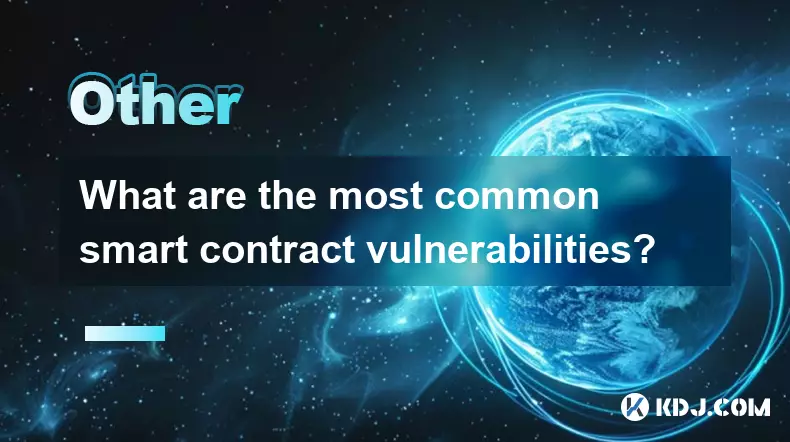
What are the most common smart contract vulnerabilities?
Sep 03,2025 at 09:18am
Reentrancy Attacks1. Reentrancy is one of the most notorious vulnerabilities in smart contracts, famously exploited in the DAO attack. It occurs when ...
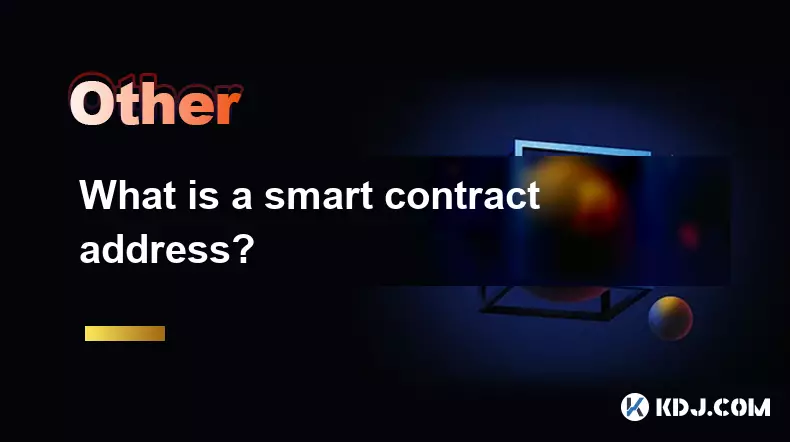
What is a smart contract address?
Sep 03,2025 at 04:36am
Understanding Smart Contract Addresses in BlockchainA smart contract address is a unique identifier on a blockchain network where a smart contract res...
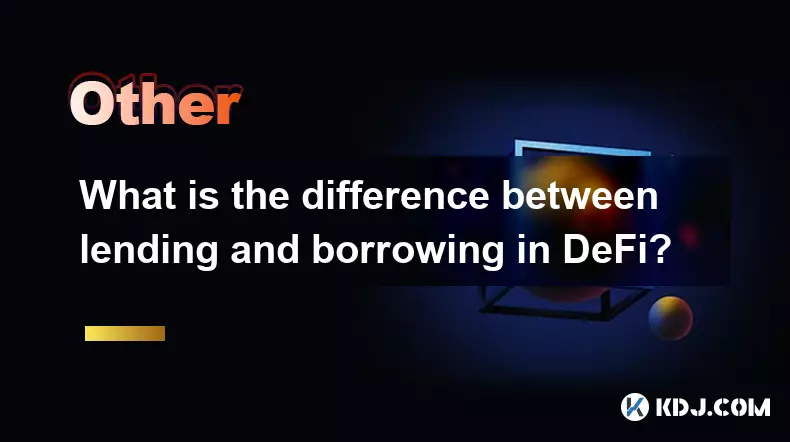
What is the difference between lending and borrowing in DeFi?
Sep 03,2025 at 12:00am
Understanding DeFi Lending Mechanisms1. DeFi lending allows users to supply their crypto assets to a liquidity pool in exchange for interest payments....

What is slippage in a DEX trade?
Sep 02,2025 at 06:18pm
Understanding Slippage in Decentralized Exchanges1. Slippage refers to the difference between the expected price of a trade and the actual price at wh...
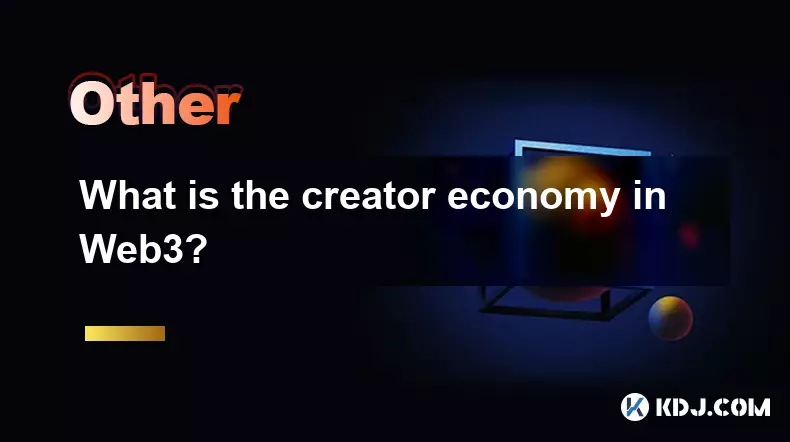
What is the creator economy in Web3?
Sep 03,2025 at 06:36am
The Decentralized Foundation of Web3 Creator Platforms1. Web3 redefines the creator economy by eliminating centralized intermediaries such as social m...

How do you participate in a project's governance?
Sep 02,2025 at 09:01pm
Understanding Governance in Blockchain Projects1. Governance in blockchain ecosystems allows token holders to influence the direction and policies of ...

What are the most common smart contract vulnerabilities?
Sep 03,2025 at 09:18am
Reentrancy Attacks1. Reentrancy is one of the most notorious vulnerabilities in smart contracts, famously exploited in the DAO attack. It occurs when ...

What is a smart contract address?
Sep 03,2025 at 04:36am
Understanding Smart Contract Addresses in BlockchainA smart contract address is a unique identifier on a blockchain network where a smart contract res...

What is the difference between lending and borrowing in DeFi?
Sep 03,2025 at 12:00am
Understanding DeFi Lending Mechanisms1. DeFi lending allows users to supply their crypto assets to a liquidity pool in exchange for interest payments....

What is slippage in a DEX trade?
Sep 02,2025 at 06:18pm
Understanding Slippage in Decentralized Exchanges1. Slippage refers to the difference between the expected price of a trade and the actual price at wh...

What is the creator economy in Web3?
Sep 03,2025 at 06:36am
The Decentralized Foundation of Web3 Creator Platforms1. Web3 redefines the creator economy by eliminating centralized intermediaries such as social m...
See all articles





















![[Pycoin] PI Coin -Start introduction of practical use (emergency)?! Now .. 'Here' first you can use it first / How to accelerate mining #paikoin [Pycoin] PI Coin -Start introduction of practical use (emergency)?! Now .. 'Here' first you can use it first / How to accelerate mining #paikoin](/uploads/2025/09/02/cryptocurrencies-news/videos/pycoin-pi-coin-start-introduction-practical-emergency-accelerate-mining-paikoin/68b6ea848f2d1_image_500_375.webp)

